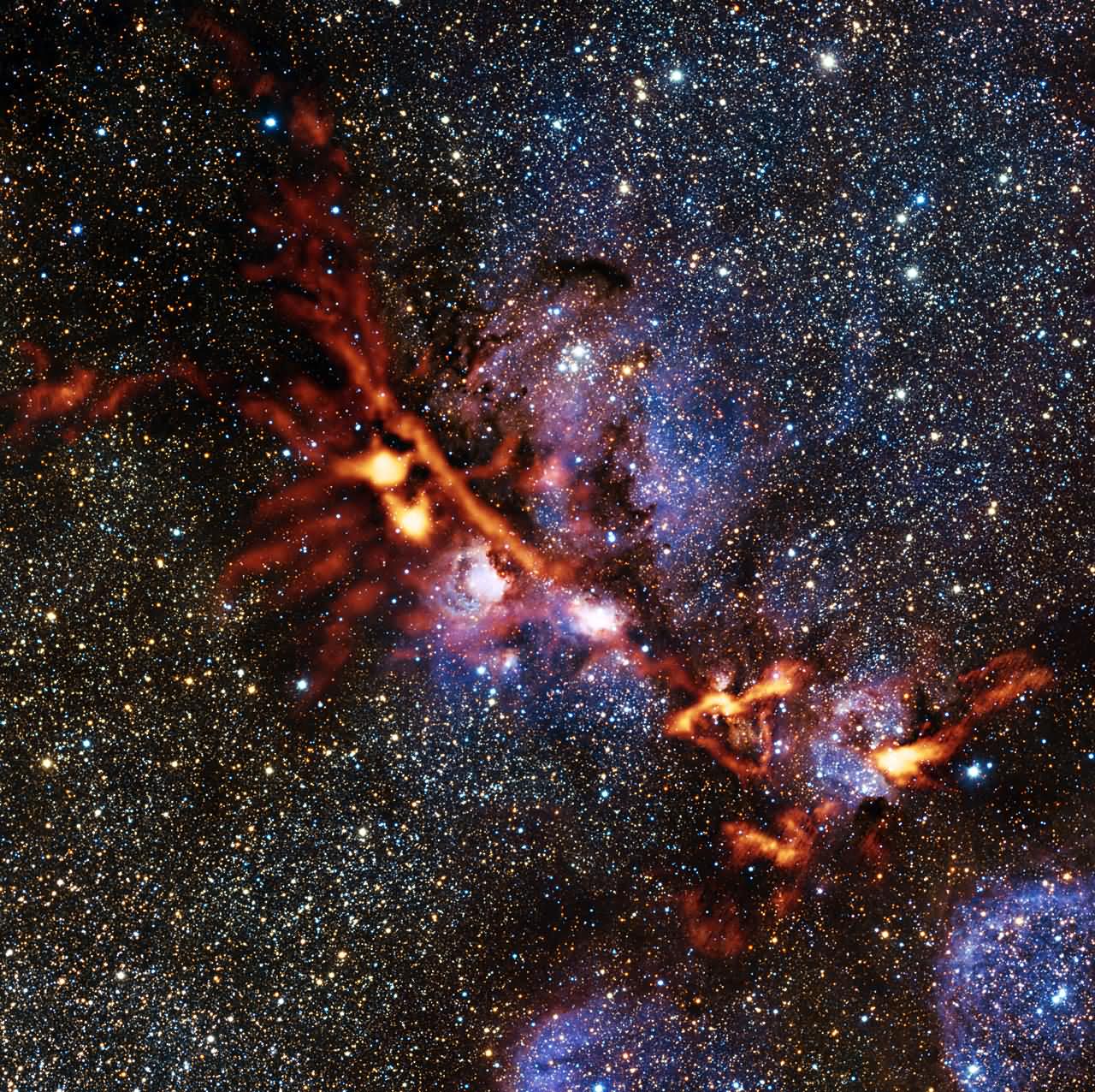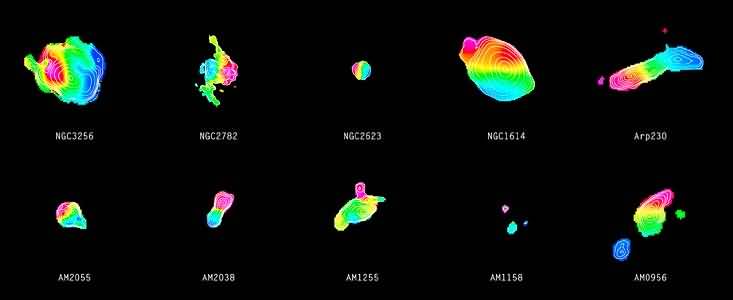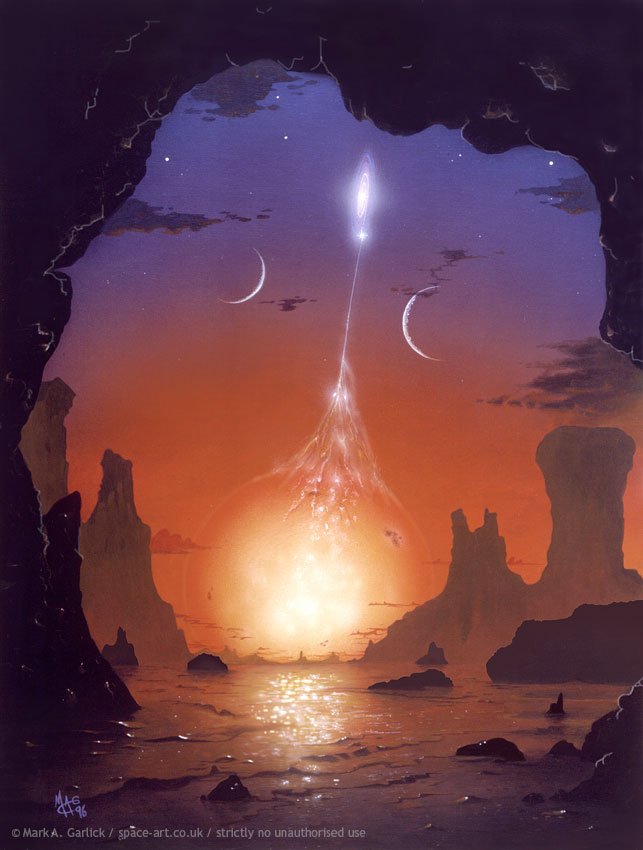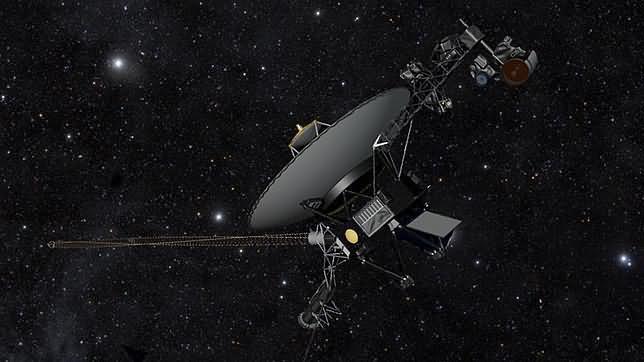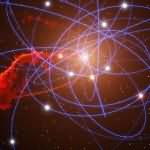The Hercules A Galaxy and the Tycho Supernova Remnant

NASA, ESA, S. Baum and C. O'Dea (RIT), R. Perley and W. Cotton (NRAO/AUI/NSF), and the Hubble Heritage Team (STScI/AURA)
Pictured here is the elliptical galaxy Hercules A (originally known as 3C 348). What distinguishes it is the radio waves it emits. This galaxy emits radio waves 1 million times more powerful than our sun, making it the most prominent object in the constellation Hercules (when observed with radio waves, of course). The white area in the center of the image represents the galaxy itself and its visible area. The red areas at either end are radio waves generated by the supermassive black hole at the galaxy's center.
The supermassive black hole at the center of the galaxy, located 2 million light-years away from us, is responsible for generating these radio waves. The black hole is so massive that it's nearly equal to the mass of the rest of the galaxy. Comparatively, it's 1,000 times more massive than Sagittarius A, the supermassive black hole at the center of the Milky Way. This black hole has a mass of 2.5 billion solar masses.
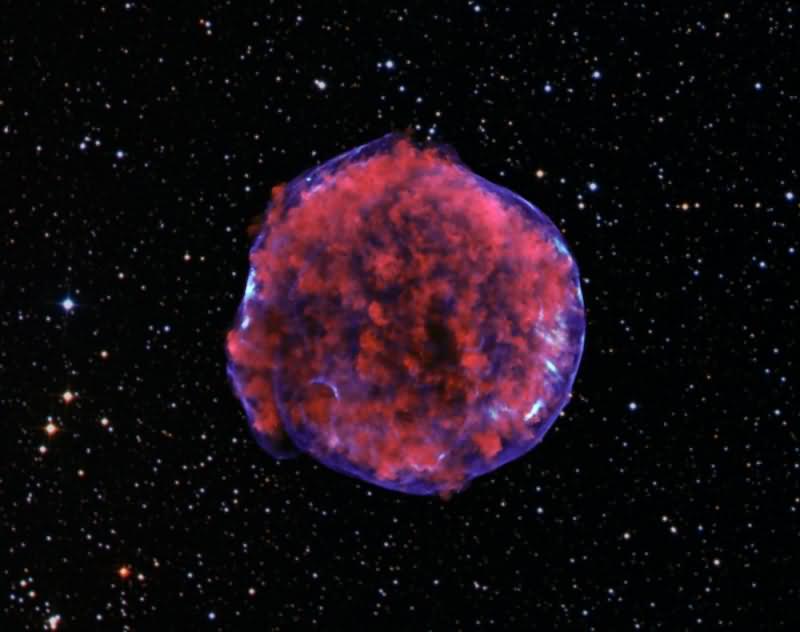
This image was taken from the Chandra X-ray observatory. Low-energy red X-rays show the debris from the supernova explosion, while high-energy blue X-rays show the blast wave of high-energy electrons.
X-ray: NASA/CXC/Rutgers/K. Eriksen et al.; Optical (starry background): DSS
When a star reaches the end of its life, it explodes as a massive supernova, and its light can be observed for weeks or months. However, the material it ejected continues to grow for thousands of years, which we call a supernova remnant.
In the Tycho supernova remnant, pictured, astronomers discovered that the explosion's reverse shock wave traveled 1,000 times faster than the speed of sound, causing the supernova remnant to heat up and emit X-rays.
Normally, it's nearly impossible to detect the remains of old supernova explosions unless the supernova's reverse shock wave heats them up and causes them to emit X-rays. So, what is this reverse shock wave?
When a star explodes as a supernova, the resulting shock wave begins to travel very rapidly through space. When it reaches interstellar material in interstellar space, this shock wave continues to travel, but it creates a shock wave that continues forward in the interstellar material and a second shock wave that travels in the opposite direction. This is called a reverse shock wave. Isn't it a beautiful journey through space?
Sources and References:
COSMOS – The SAO Encyclopedia of Astronomy-Supernova Remnant
Science Daily-Mach 1000 Shock Wave Lights Supernova Remnant
Harvard-Smithsonian Center for Astrophysics (2013, November 25). Mach 1000 shock wave lights supernova remnant.


